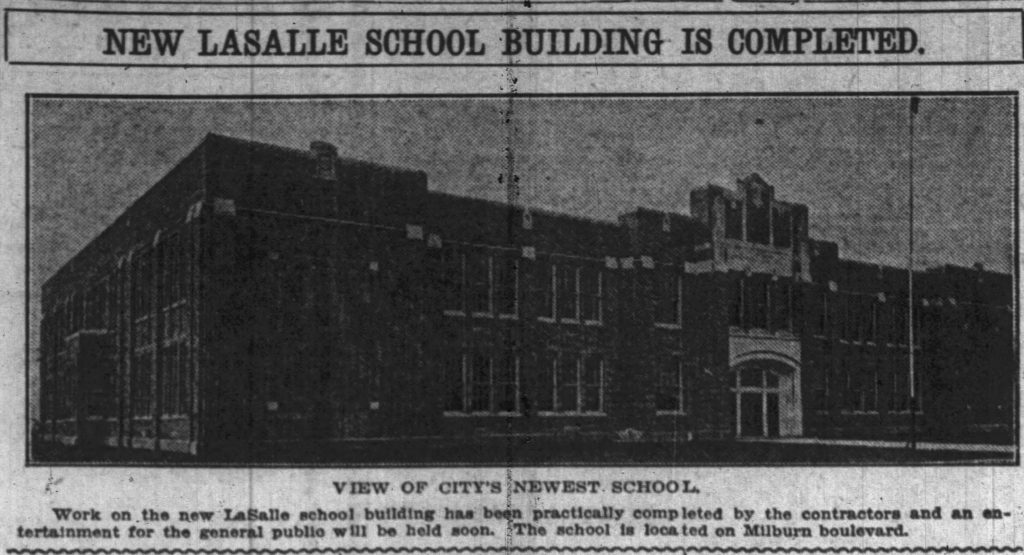LaSalle Elementary School and the new Sixth Ward: 1926
While minority groups were not allowed to purchase property in most of the neighborhood, Caucasians flocked to the area. As Floral Park was quickly developing and enticing a large number of new citizens, the city quickly realized that this growth would necessitate a new school. In 1920, the Board of Education secured a large tract of land along the south side of Milburn Boulevard between Hendricks and Jackson. This parcel initially hosted a portable structure, which educated children for their first three years. It was known as the “Milburn School” or the “Milburn Boulevard Portable School.” For further elementary education, children would have to walk to the former South Side School at 8th and Spring Streets.
The portable school was moved to Merrifield Avenue and Jefferson Boulevard in 1926, and a handsome modern educational facility was erected on the site. That fall, the facility would officially open to educate all the children on the southwest side of Mishawaka. Designed by South Bend architects Freyermuth & Maurer, the elegant building was named LaSalle Elementary School. It had a capacity of 700, and it would serve grades 1-6 as well as kindergarten. Notably, the Arcadian brick with white brick trim resembled the brand-new Mishawaka High School, located on the east side of the city. Inside, the glazed brick, ample windows, and modern furniture reflected the most contemporary amenities and state-of-the-art school design. Most impressive was the combination gymnasium and auditorium, which was larger than the high school gymnasium at the time. The South Bend Tribune trumpeted LaSalle Elementary as a “monument to the progressiveness of the city.”

The completion of LaSalle School and the growth in population convinced the residents of Floral Park that they deserved more adequate representation and a seat at the table in the city of Mishawaka. In late 1926, nearly 600 community members signed a petition requesting their own Ward, extending from Logan Street to Ernsberger Street and Lincolnway West to Ewing Avenue. At that time, Floral Park was part of the exceptionally large Third Ward, which included the entire West End and extended all the way to Main Street. Distances to polling places were significant, and many people felt that their community’s needs were not being addressed due to the large ward boundaries. The denizens of Floral Park would get their wish on February 21, 1927, when Mishawaka’s City Council unanimously approved the establishment of the Sixth Ward. It extended from Logan Street to Ernsberger Street and from Ewing Avenue to the Saint Joseph River. The ward was divided into two precincts, with Dale Avenue as the dividing line. The inhabitants of Floral Park would now have a voice in the city, and it is likely that most of them were optimistic about the future of the growing community. Little did they know about the turbulent path ahead.
